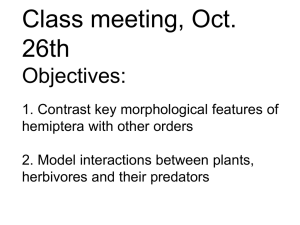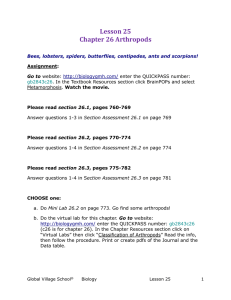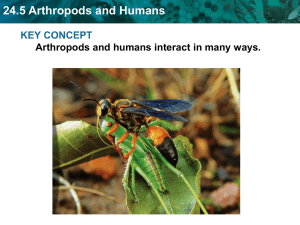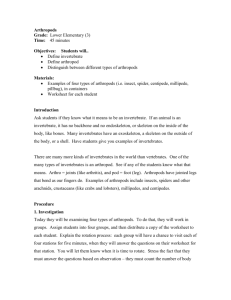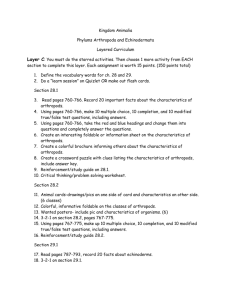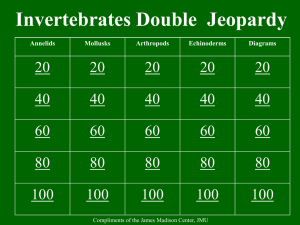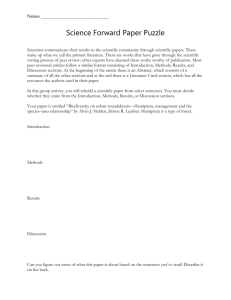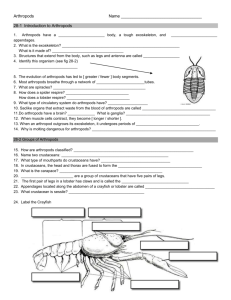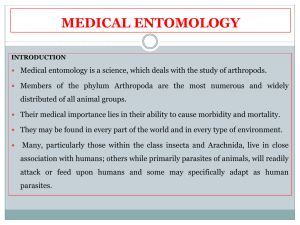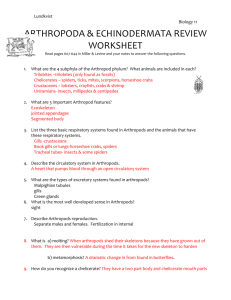Preserving dead arthropods for museum use
advertisement
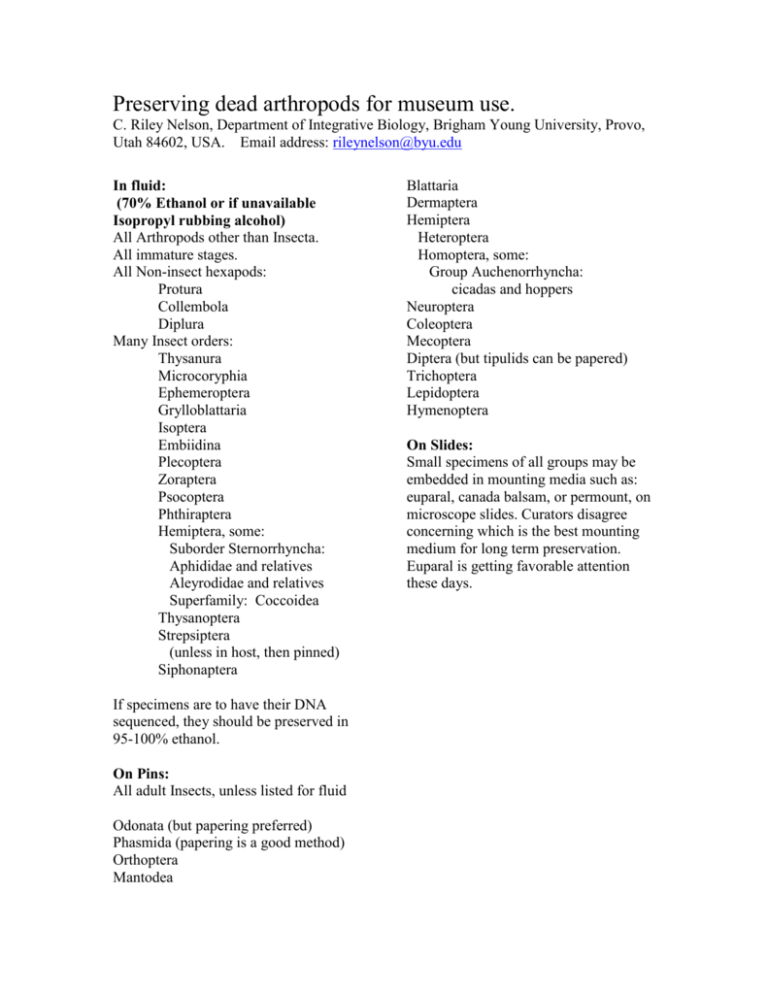
Preserving dead arthropods for museum use. C. Riley Nelson, Department of Integrative Biology, Brigham Young University, Provo, Utah 84602, USA. Email address: rileynelson@byu.edu In fluid: (70% Ethanol or if unavailable Isopropyl rubbing alcohol) All Arthropods other than Insecta. All immature stages. All Non-insect hexapods: Protura Collembola Diplura Many Insect orders: Thysanura Microcoryphia Ephemeroptera Grylloblattaria Isoptera Embiidina Plecoptera Zoraptera Psocoptera Phthiraptera Hemiptera, some: Suborder Sternorrhyncha: Aphididae and relatives Aleyrodidae and relatives Superfamily: Coccoidea Thysanoptera Strepsiptera (unless in host, then pinned) Siphonaptera If specimens are to have their DNA sequenced, they should be preserved in 95-100% ethanol. On Pins: All adult Insects, unless listed for fluid Odonata (but papering preferred) Phasmida (papering is a good method) Orthoptera Mantodea Blattaria Dermaptera Hemiptera Heteroptera Homoptera, some: Group Auchenorrhyncha: cicadas and hoppers Neuroptera Coleoptera Mecoptera Diptera (but tipulids can be papered) Trichoptera Lepidoptera Hymenoptera On Slides: Small specimens of all groups may be embedded in mounting media such as: euparal, canada balsam, or permount, on microscope slides. Curators disagree concerning which is the best mounting medium for long term preservation. Euparal is getting favorable attention these days.
